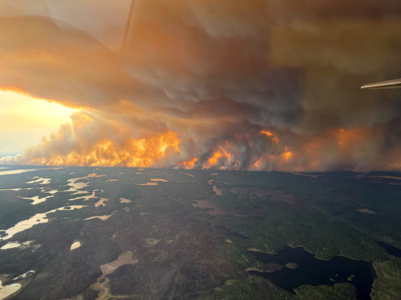To: Mark Carney
Canadians can’t afford the climate crisis, literally

Mark Carney must triple the amount of funding allocated to the Canada Greener Homes Initiative, help municipalities get more local fiscal autonomy to lead the energy transition from a policy implementation point, and help set a national green buildings standard.
Why is this important?
The climate crisis is expensive. In just a few hours during July 2024, heavy rainfall in Toronto caused over $940 million in insured damages. A month later in August, a 20-minute hailstorm in the Calgary area led to $3.25 billion in insured losses with 130,000 claims filed in a single day.
When we go beyond just looking at the insured losses and account for the cost of these extreme weather events on healthcare, businesses, and social factors, the costs are even greater. For example, Swiss Re estimates that the financial impact of the Fort McMurray wildfires cost around $8.9 billion or 5.2 times greater than insured losses of $1.7 billion.
What is the largest contributor to this problem? Fossil fuels. Fossil fuels – coal, oil, and gas – are by far the largest contributor to climate change, accounting for over 75% of global green house gas emissions and nearly 90% of all carbon dioxide emissions. As greenhouse gas emissions blanket the Earth, they trap the sun’s heat. This leads to global warming and climate change.
Heat-pumps and Green Building Standards are an important part of the energy transition. Local governments who are closest to the ground must be treated as equal partners in this as they are the ones closest to the ground, understand the needs of the community, and engage in deliberative processes.
When we go beyond just looking at the insured losses and account for the cost of these extreme weather events on healthcare, businesses, and social factors, the costs are even greater. For example, Swiss Re estimates that the financial impact of the Fort McMurray wildfires cost around $8.9 billion or 5.2 times greater than insured losses of $1.7 billion.
What is the largest contributor to this problem? Fossil fuels. Fossil fuels – coal, oil, and gas – are by far the largest contributor to climate change, accounting for over 75% of global green house gas emissions and nearly 90% of all carbon dioxide emissions. As greenhouse gas emissions blanket the Earth, they trap the sun’s heat. This leads to global warming and climate change.
Heat-pumps and Green Building Standards are an important part of the energy transition. Local governments who are closest to the ground must be treated as equal partners in this as they are the ones closest to the ground, understand the needs of the community, and engage in deliberative processes.
